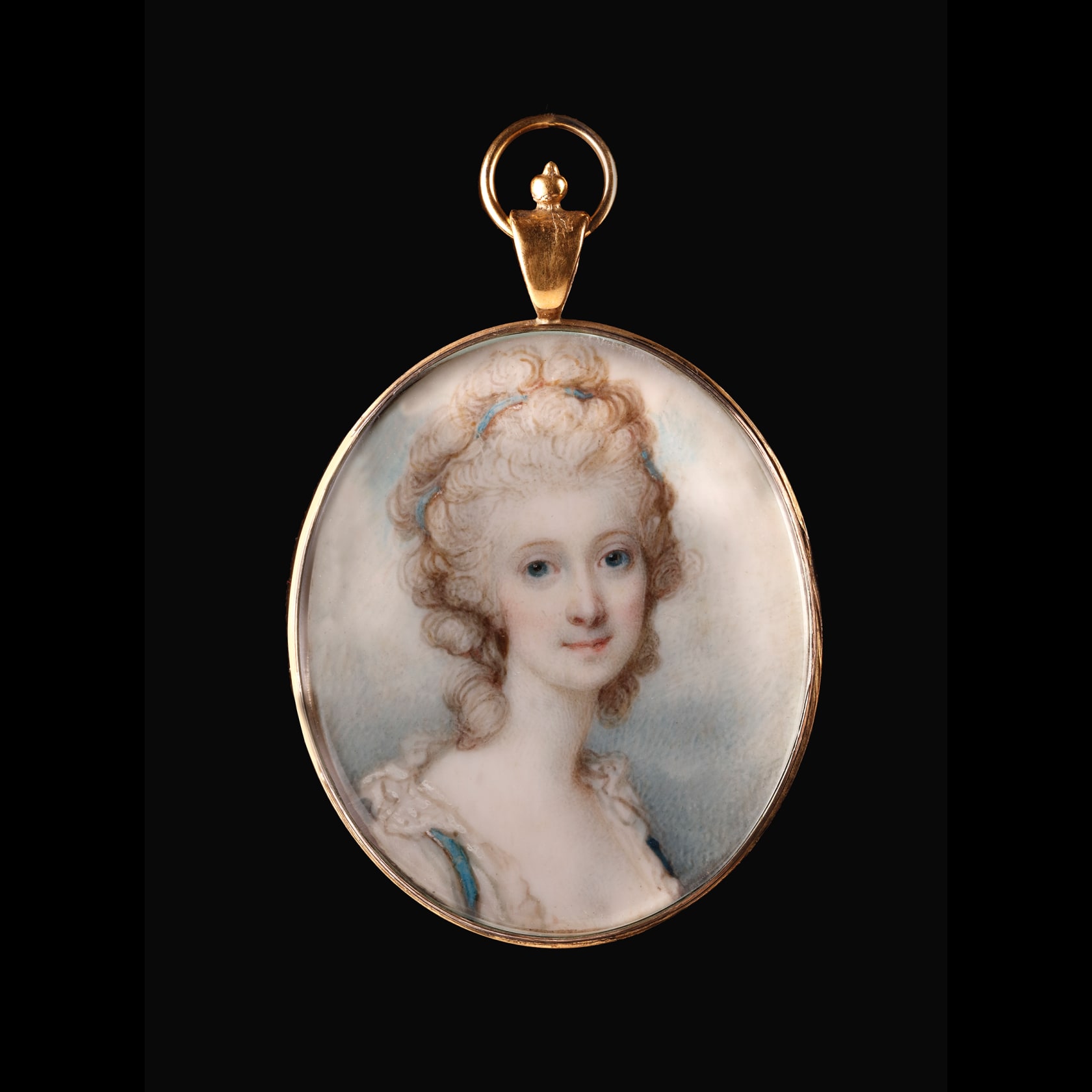Anne Stephenson married Alderman John Sawbridge (1732-1795) in 1766. Anne was the daughter of Alderman Sir William Stephenson and the second wife for John Sawbridge, whom he married just a few months after the death of his first wife, Mary Bridgeman. The couple had three sons and one daughter. Sawbridge was a described as a ‘patriotic alderman’ in a book on the history of Northumberland, being a representative of the City of London in three successive parliaments.[1] He was elected M.P. for Hythe in 1768 and for London in 1774, 1780, 1784 and 1790. He became Lord Mayor of London in 1775. Anne was featured in an etching by James Gillray called 'The royal joke, - or - black jacks delight', published 25 April 1788.
This portrait of Anne dates to circa 1775, when her husband John became mayor of London. Although we have no record of Anne’s peronsality, her husband was described as ‘a stern republican in principles, almost...
Anne Stephenson married Alderman John Sawbridge (1732-1795) in 1766. Anne was the daughter of Alderman Sir William Stephenson and the second wife for John Sawbridge, whom he married just a few months after the death of his first wife, Mary Bridgeman. The couple had three sons and one daughter. Sawbridge was a described as a ‘patriotic alderman’ in a book on the history of Northumberland, being a representative of the City of London in three successive parliaments.[1] He was elected M.P. for Hythe in 1768 and for London in 1774, 1780, 1784 and 1790. He became Lord Mayor of London in 1775. Anne was featured in an etching by James Gillray called 'The royal joke, - or - black jacks delight', published 25 April 1788.
This portrait of Anne dates to circa 1775, when her husband John became mayor of London. Although we have no record of Anne’s peronsality, her husband was described as ‘a stern republican in principles, almost hideous in aspect, of a coarse figure and still coarser manners, but possessing an ample fortune and a strong understanding. He was the greatest proficient at whist to be found among the clubs in St. James's Street, and since the death of Beckford, and with the exception of Crosby and Wilkes, no lord mayor had attained greater popularity.’[2]
This work has been registered by Philip Mould and Company as qualifying as exempt. Please contact laura@philipmould.com if you have any further queries.
[1] J. Hodgson, J. Hodgson-Hinde, J. Raine, J. Collingwood Bruce, A History of Northumberland, in Three Parts: General history of the country, 1840, p.35
[2] As described by Sir Nathaniel William Wraxall (1751-1831)





